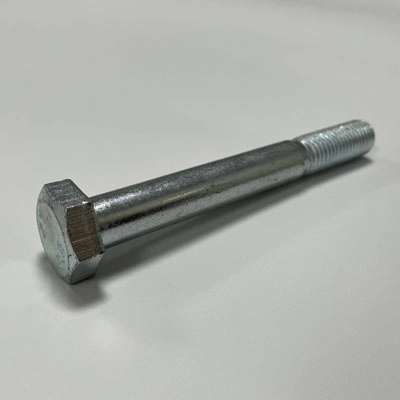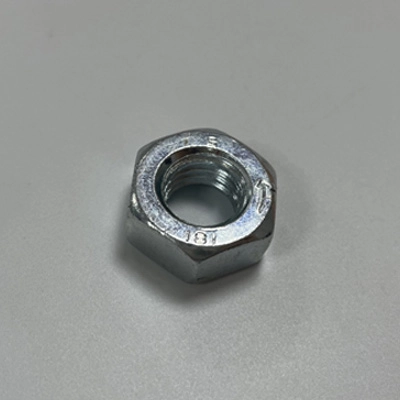caTEGORIES
Tags
What Are the Critical Steps to Ensure Precise Bolt and Nut Alignment
Posted: August 28, 2025
Categories: News
Getting bolts and nuts lined up right makes sure the load spreads evenly, stops early breakdowns, and keeps structures solid. Messing it up causes stress buildup, rubbing, and loose bolts—super risky in stuff like planes, cars, or big machines. Stick to ISO/DIN rules, use careful torque tools, and check fit-ups to avoid pricey mistakes.

Bolt and Nut Alignment’s Importance for Structural Performance
Alignment’s Effect on Assembly Integrity
When you put together machine parts or structures, bolt and nut alignment isn’t just nice—it’s a must. If they’re off, stress piles up unevenly in joints. That can lead to early wear, thread damage, or total joint failure. In fields like aerospace, automotive, or heavy machinery, even a tiny misalignment can wreck the whole system’s strength.
Good alignment spreads preload forces evenly across threads and surfaces. This keeps the clamping force steady under moving loads or heat changes. Without it, bolts might bend or snap, which messes up safety and performance big time.
Consequences of Bolt Misalignment in High-Stress Applications
In tough setups like pressure tanks, turbines, or steel frames, misalignment creates stress hotspots. These speed up wear and tear, causing tiny cracks around bolt holes or threads. Over time, those cracks grow and can tank the whole assembly.
Plus, misaligned bolts can rub and stick during tightening—a problem called galling. This might mean tearing the whole thing apart to fix, hiking up costs and leaving equipment down when you least expect it.
Industry Standards Defining Acceptable Alignment Tolerances
Yup, there are rules for this. Standards like ISO 898-1 cover fastener strength, while DIN 931 for bolts and DIN 934 for nuts set limits on thread size, straightness, and squareness. These keep parts consistent across batches and work with pieces from different suppliers. All products are covered by our own ISO9001 Quality Assurance Processes. Besides, the following certs can be provided on request: 3.1 certification to DIN-EN-10204; Initial Sample Inspection Reports (ISIR); Production Part Approval Process (PPAP) up to level 3.
Pre-Assembly Steps for Ensuring Bolt Alignment
Importance of Evaluating Component Tolerances and Fit-Up Conditions
Before sticking any bolt in a joint, check the sizes of holes, threads, and surfaces. If holes are too big or off-center from bad manufacturing or welding heat, even top-notch bolts won’t line up right. Using digital calipers or bore gauges makes sure holes match the design. In 2024, precision measurement tools like digital calipers achieved accuracy within ±0.01 mm, critical for ensuring hole tolerances in high-strength fastener applications meet ISO 8015 standards. (Source: ISO, ISO 8015:2011, Reconfirmed 2024)
This is key for high-strength bolts like DIN 931 hex heads, which need tight fits to work their best.
Surface Preparation Methods Improving Alignment Accuracy
Smooth out sharp edges around bolt holes to avoid thread damage when inserting. Clean surfaces with solvents to get rid of oil that might mess with torque or cause slipping during tightening. For critical setups needing rust protection and easy sliding, go for zinc-plated finishes like those on Metric Hexagon Full Nuts DIN 934.

Fastener Selection Matching Application Requirements
Pick bolts and nuts with matching strength and rust resistance for your setup. Material compatibility is super important to make sure they hold up in your environment. Qewitco’s competitive products are FASTENERS of general grade, high grade, also fasteners made of Brass/Copper, Stainless Steel, aluminum and alloys. Test certificates to be provided with professional quality control and traceabilities.
Techniques for Accurate Bolt Insertion
Use of Pilot Holes or Guide Pins for Initial Fastener Placement
Pilot holes are like a roadmap for bolts, helping you line them up before pushing them in all the way. They cut down on side forces during assembly—super helpful with hard materials where cross-threading is a risk. Guide pins also keep parts centered until you lock in the final bolts.
Best Practices for Torque Control and Thread Engagement
Grab a calibrated torque wrench to apply steady torque based on the maker’s specs. Too much torque stretches bolts past their limit; too little leaves them loose. Make sure threads fully engage without hitting the bottom in blind holes—this maximizes the gripping area.
Lubrication’s Role in Preventing Galling During Tightening
Put anti-seize or special lubes on stainless steel threads to cut friction. Galling happens a lot in fine-thread setups under heavy pressure if you skip this step. We offer a wide range of patching options including patches for locking fasteners into position, sealing assemblies, or enhanced performance.
Tools for Precise Bolt Alignment
Mechanical Aids Improving Fastener Positioning Accuracy
Jigs and fixtures hold parts steady while you line up bolts perfectly. Alignment gauges check if holes are centered before you start the final setup. These tools cut down on mistakes during hand assembly, especially with big flanged joints or multi-hole plates.
Digital Torque Wrenches’ Enhancement of Assembly Control
Digital wrenches give real-time torque feedback, way more accurate than old-school ones. Some even save data for tracking—a big deal for ISO-certified shops. With our own testing facilities, we can proceed out-going inspection processes ensuring they conform to the relevant international standards.
Maintaining Bolt Alignment During Tightening
Cross-Tightening Patterns in Multi-Bolt Assemblies
Tightening bolts one by one around a flange creates uneven pressure, which can warp parts. Cross-tightening spreads the force evenly across all sides, stopping twists or off-kilter loads that mess up nearby bolts. This is super important for gaskets in pressure flanges or engine heads where even clamping is critical.
Monitoring Joint Movement During Tightening
Use dial indicators near key joint spots to catch any shifting while tightening. If parts move too much, it’s a sign of misalignment that needs fixing before you keep going.
Verifying Proper Bolt Alignment Post-Assembly
Visual Inspection Criteria Post-Tightening
Check that bolt heads sit flat against surfaces without tilting—that shows they went in straight. Threads should stick out past nuts by at least two full turns, unless the design says otherwise. Surfaces should look clean, with no scratches or rub marks from forced fixes during setup.
Advanced Measurement Systems for Precision Checks
Ultrasonic sensors measure bolt tension after tightening—great for critical joints where preload matters. Laser systems check if parts stay aligned after clamping, making sure everything holds steady over time.
Design Factors Influencing Bolt/Nut Alignment Success
Engineers’ Need to Account for Hole Clearance and Thread Fit Tolerances
Designers gotta set hole sizes with just enough wiggle room for easy bolt insertion in real-world conditions. Too much gap causes joints to shift; too tight makes alignment a pain. Thread fit classes need to match between bolts and nuts per ISO standards like those in DIN 933 hex setscrews.
Material Compatibility’s Effect on Long-Term Alignment Stability
Different materials expand at different rates under heat, which can shift aligned parts over time. Picking materials with close expansion rates helps in outdoor or hot setups. We provide not only carbon steel fasteners but also brass, copper alloy or stainless steel ones.
Technician Training for Consistent Bolt Alignment Practices
SOPs for Manual Assembly Tasks
Standard Operating Procedures should lay out every step—from cleaning surfaces to final torque checks—with pictures if possible. These guides cut down on differences between workers across shifts or sites. Training should include hands-on practice with real parts under supervision until they nail it every time. We offer the technical knowledge where needed to support our clients to relay them to their customers.
If you’re looking for a partner who combines Western-style management principles with Far Eastern value delivery—and offers everything from standard items like Hexagon Head Bolts DIN 931 to fully customized solutions—you’ll find unmatched reliability at Qewitco Fasteners Co., Ltd. Established in 2004, Qewitco has been devoting itself to producing and trading premium and consistent quality of products.
FAQ
Q: What causes galling during bolt tightening?
A: Galling occurs when metal surfaces seize due to friction under pressure—common in stainless steel fasteners without lubrication or anti-galling coatings applied beforehand.
Q: How do I know if my bolt is fully aligned before applying torque?
A: The bolt should insert smoothly without resistance; any binding indicates misalignment which needs correction before proceeding with torque application.
Q: Can I reuse bolts after disassembly?
A: Only if they show no signs of stretching, galling, or thread damage—and meet original length/tension specs upon inspection using calibrated tools like micrometers or ultrasonic testers.


